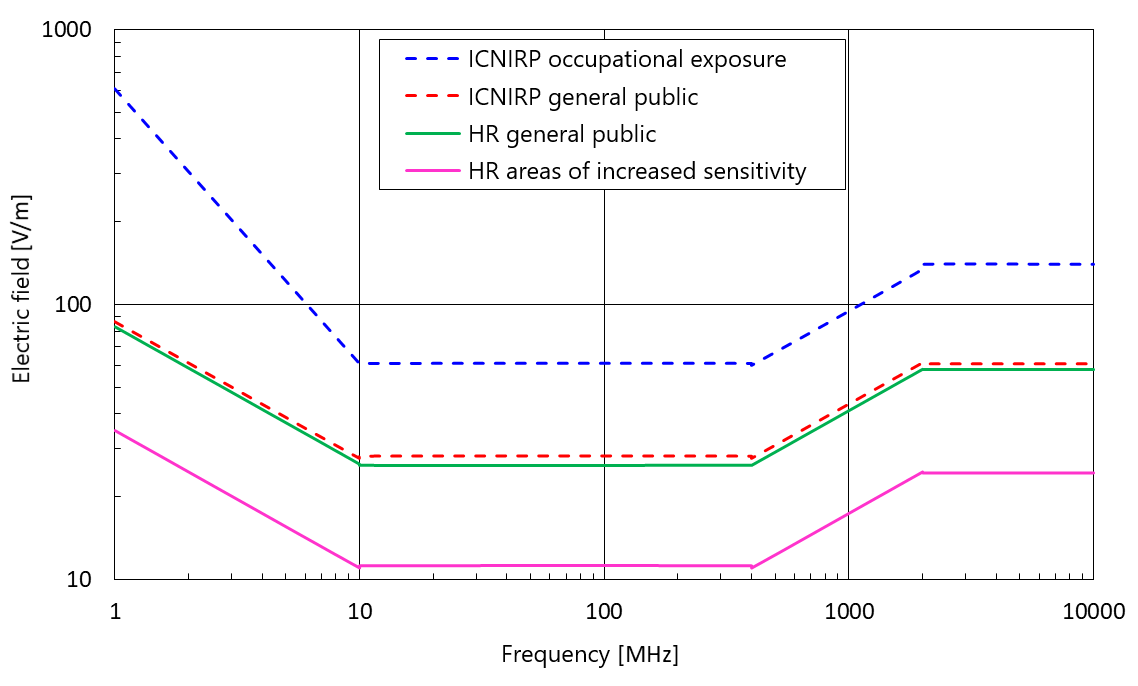Regulations
The International Commission on Non-Ionising Radiation Protection (ICNIRP) recommends limit values for exposure levels to non-ionising electromagnetic fields in public areas accessible to the general population. ICNIRP is funded by governments and public bodies and is completely independent of industry. The World Health Organization (WHO) also uses ICNIRP recommendations in its work.
In the Republic of Croatia, the protection of people from electromagnetic fields is the responsibility of the Ministry of Health, which prescribes protective measures in the Ordinance on Protection from Electromagnetic Fields. The prescribed limit values for public areas are based on the Recommendation of the Council of the European Union. In relation to the Recommendation, the concept of areas of increased sensitivity was additionally introduced, for which stricter limit levels are prescribed, when compared to the limit levels for public areas (2.5 times for electric field strength, 6.25 times for power density).
Figure 1. ICNIRP limits and restrictions in the Republic of Croatia

Source: prof. dr. sc. Davor Bonefačić: presentation "Electromagnetic fields of high frequencies - exposure, risks and protection",In the Republic of Croatia, the protection of people from electromagnetic fields is the responsibility of the Ministry of Health, which prescribes protective measures in the Ordinance on Protection from Electromagnetic Fields. The prescribed limit values for public areas are based on the Recommendation of the Council of the European Union. In relation to the Recommendation, the concept of areas of increased sensitivity was additionally introduced, for which stricter limit levels are prescribed, when compared to the limit levels for public areas (2.5 times for electric field strength, 6.25 times for power density).
Figure 1. ICNIRP limits and restrictions in the Republic of Croatia

FER, 2020.
Figure 2. Comparison of EMP restrictions at the EU level
Group 1 - restrictions in accordance with the EU recommendation
Group 2 - no restrictions or less strict restrictions than the EU recommendation
Group 3 - stricter restrictions than EU recommendations
Source: National Institute for Public Health and the Environment (RIVM), Netherlands